
Sometimes life hands you lemons. Other times, we actively seek them by growing our own lemon trees.
There really isn’t anything like having a citrus tree in your garden. They look great, making any space look like a summer paradise. Lemon trees are no exception. They’re a favorite to grow, mainly because they’re relatively easy to care for. They also grow well in various climates and conditions. Their main benefit is how quickly they produce fruit.
However, lemon trees have one downside.
They’re prone to a long list of pests, diseases, and problems. If you don’t catch them in time, you could end up with no fruit at all. Some of these problems could be the result of bad gardening habits, others are just pets and diseases that spring up when you least expect it.
Luckily, there are solutions and preventative measures. You’ll be making lemonade in no time.
Care Guide To Lemon Trees
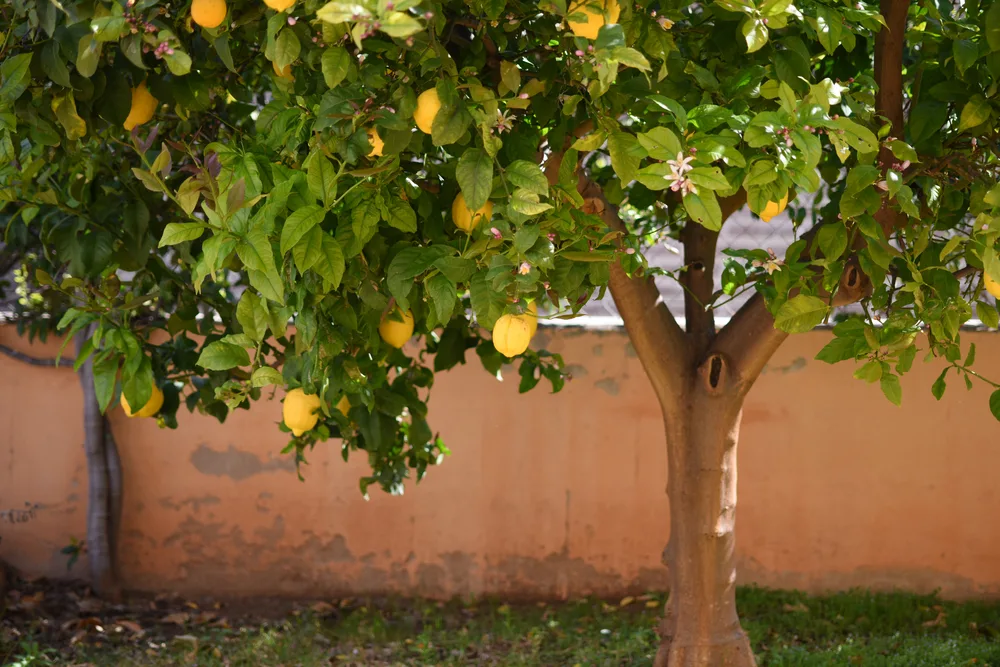
Before we get into the list of lemon tree issues, let’s recap on the best way to care for your lemon tree.
Lemon trees love plenty of light. Plant them in the sunniest spot in your garden so they can bask in the rays for at least six hours a day at minimum. Semi-tropical and tropical climates are the best for lemon trees (USDA zones 8-11).
Lemon trees are the most sensitive of citrus trees when it comes to colder temperatures, thriving in temperatures in the upper 70s and 80s. They also love high levels of humidity.
Like most citrus trees, lemons need well-draining, textured soil with slightly acidic levels. Avoid mulching around the base of your lemon tree and make sure there is no pooling water when you do water.
Speaking of watering your tree, make sure you maintain moist soil throughout the warmest days of summer. Younger trees need frequent watering, sometimes as often as twice a week. Older lemon trees do become more drought-tolerant, but don’t skip out on watering altogether.
Younger lemon trees may need more regular pruning to encourage healthy branch growth. Pruning also allows for air to flow easily between branches and leaves, and allows more light to reach all areas of the tree.
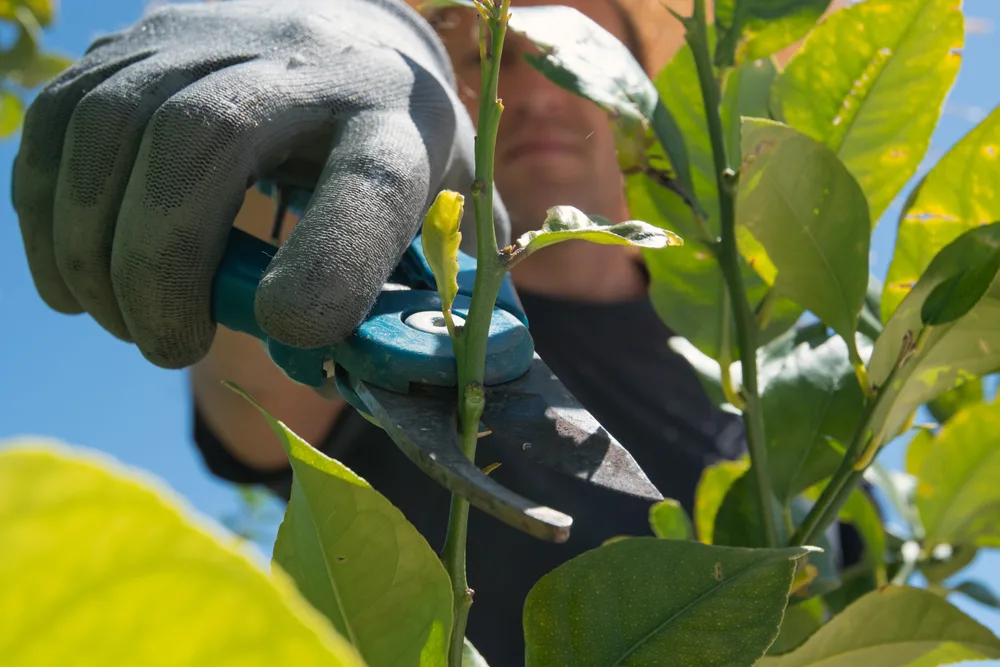
Now that we’ve got the care guide down, let’s get into the seven problems of lemon trees, and how to tackle them.
1. Lesions On Leaves – Citrus Canker
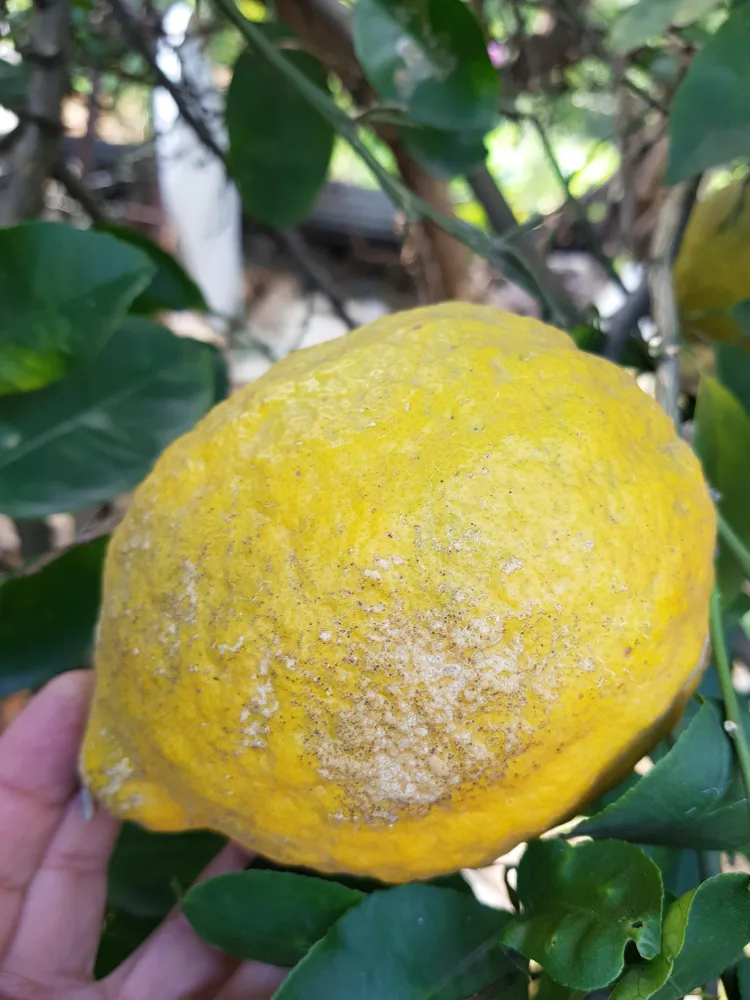
One of the most devastating common lemon tree diseases is citrus canker. This disease is caused by the bacterium Xanthomonas citri. Going back to the 1900s, it was first discovered in Texas and Florida. Many believe that it originated in Japan, finding its way to the states on shipped lemon tree seeds.
Citrus canker first appears on your lemon tree leaves. Small lesions pop up on both sides of the leaves. They’re often raised and look like small craters. These cankers or spots look like water stains and have a yellow ring around them. If left unattended they will spread to the stems and fruits.
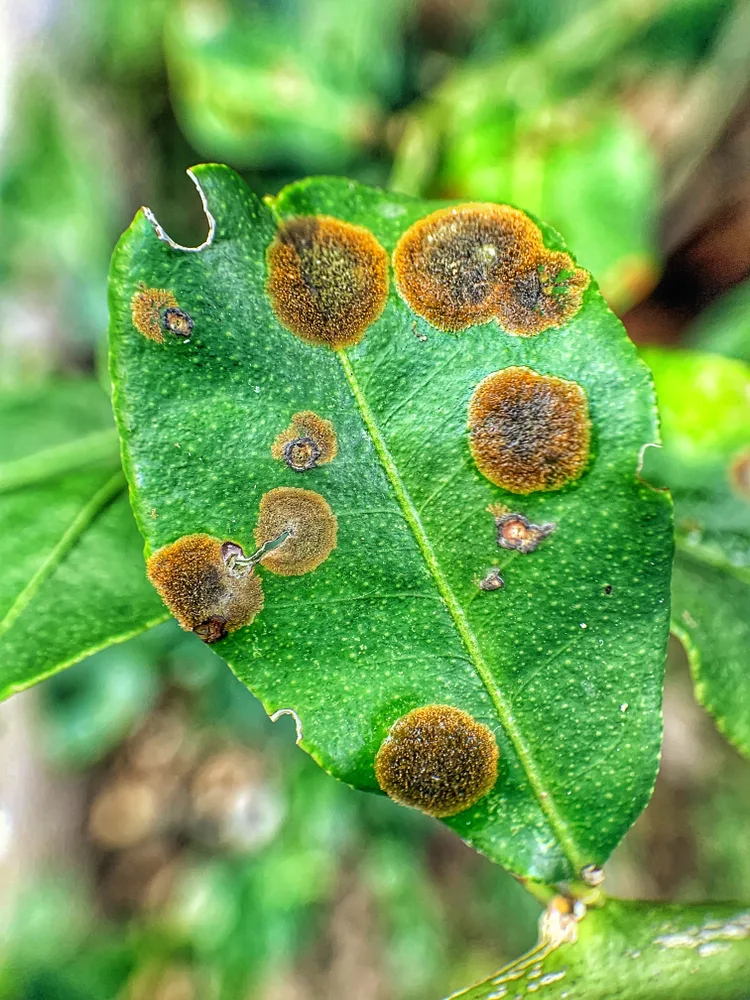
Citrus canker infections aren’t harmful to humans, but they will devastate your lemon tree and other members of the citrus family. Defoliation, fruit drop, and shoot dieback are common symptoms of citrus canker that’s been left to spread.
What’s worse is that this disease spreads easily by cross-contamination of plant tools, wind, and rain. The movement of infected plants and even birds can also spread citrus canker. The citrus canker bacteria survive for 10 months on leaves, plant debris, and the bark of infected trees, making this disease difficult to control.
Prevention is the only ‘cure’ when it comes to citrus canker.
When the disease first appeared and destroyed agricultural citrus trees, the solution was to burn all infected trees. Other trees within a 50-foot radius were burnt too. Today though, preventative measures are the go-to way when dealing with citrus canker.
Preventative copper bactericides are often used, together with good garden maintenance. You could even opt to grow resistant varieties. But, if you notice a citrus canker infection, your only option is to, unfortunately, destroy your lemon tree.
2. Black Moldy Spots – Sooty Mold (And Aphids)
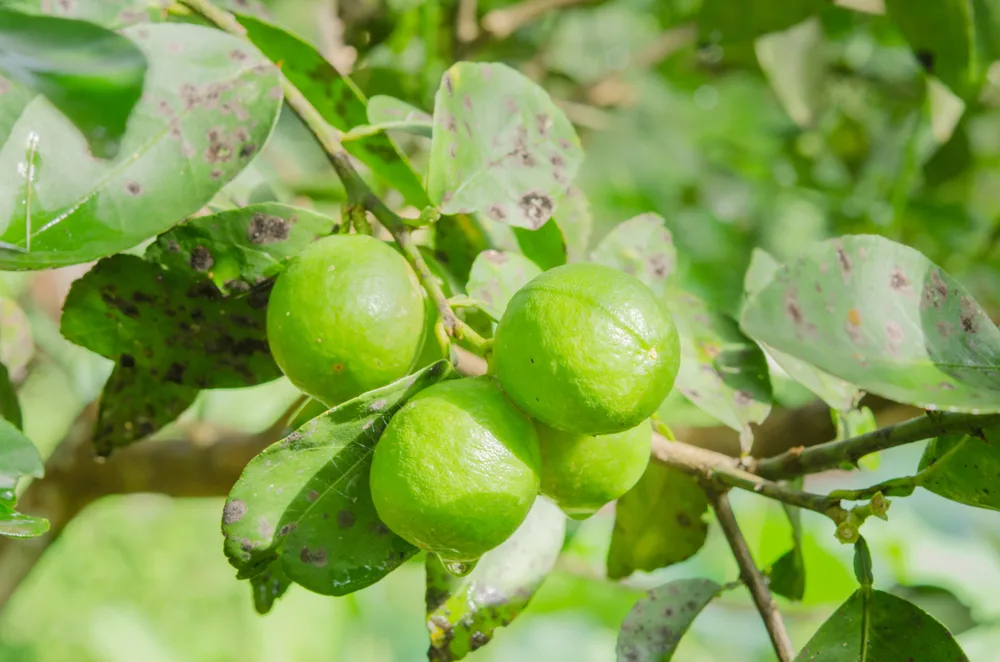
Sooty mold is a common disease for many plants, especially those loved by aphids. Lemon trees are no exception. Sooty mold grows on the sticky substance secreted by aphids, known as honeydew.
This mold is black and while technically not harmful to the plants, it prevents photosynthesis, having devastating consequences. And, a huge aphid infestation leads to defoliation and the death of your lemon tree.
You’ll quickly know if you have an aphid and sooty mold problem. Your lemon tree leaves and branches will look like they’ve been dusted in ash and covered in black grime.
One of the best ways to prevent sooty mold from taking over your lemon tree is to get rid of aphids. They’re an easy pest to evacuate from your garden. You can simply pick them off your lemon tree leaves and throw them in a bucket of soapy water.
Another go-to hack is to spray them off your leaves with a trusty water spray bottle. Alcohol sprays and horticultural oils can be thrown in the spray bottle as an added aphid-killing measure. You can also use them to wipe the aphids off the infected leaves.
Introducing natural aphid predators is another great way to get rid of aphids and with them, prevent sooty mold. Ladybugs are great little aphid eaters that won’t harm any of your plants or other helpful insects. You’ll want to check out how to purchase and release lady bugs if you choose that route.
Once you’ve got your aphid infestation under control, you can simply wash off all that black sooty mold. Use horticultural oils to wipe off mold stubbornly sticking to leaves and branches.
3. Fuzzy Gray Mold And Brown Spots – Botrytis Blight
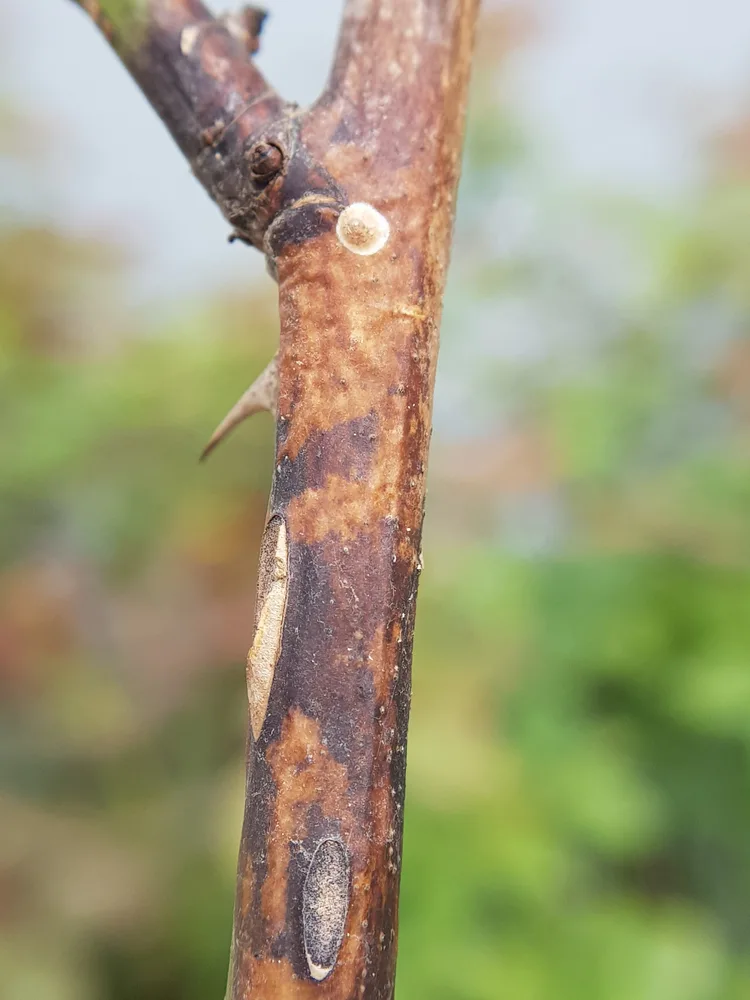
Seasoned gardeners are probably no strangers to botrytis blight.
Botrytis cinerea, the fungus causing this disease, grows best in high humidity and most often occurs after long periods of rain. It lives on infected plant debris and easily spreads by wind and rain. Once it lands on your lemon tree, all it needs is a little bit of moisture to germinate.
This fungus quickly attacks lemon tree leaves, small branches, flowers, and even the lemons, leaving behind a brown or gray fuzzy mold and dark brown spots. Flowers eventually drop and fruit won’t set. This gray mold ends up covering fruit that has already set and causes the branches to die back.
Botrytis blight can easily be prevented. Lemon trees planted in the sunniest spot in the garden and spaced out correctly eliminate some conditions that botrytis blight thrives in. Your lemon tree dries faster in the sun and with good air circulation.
You should always practice good garden hygiene, especially if you’re wanting to prevent diseases like botrytis blight. Throw away dead foliage and plant debris to avoid attracting disease. Be careful during wet weather though, as you could accidentally spread the disease when handling infected debris.
If you spot botrytis blight growing on your lemon tree leaves, prune them away immediately. Make sure you clean your pruning shears when you’re finished.
4. Tan Spots with Dark Outlines – Anthracnose
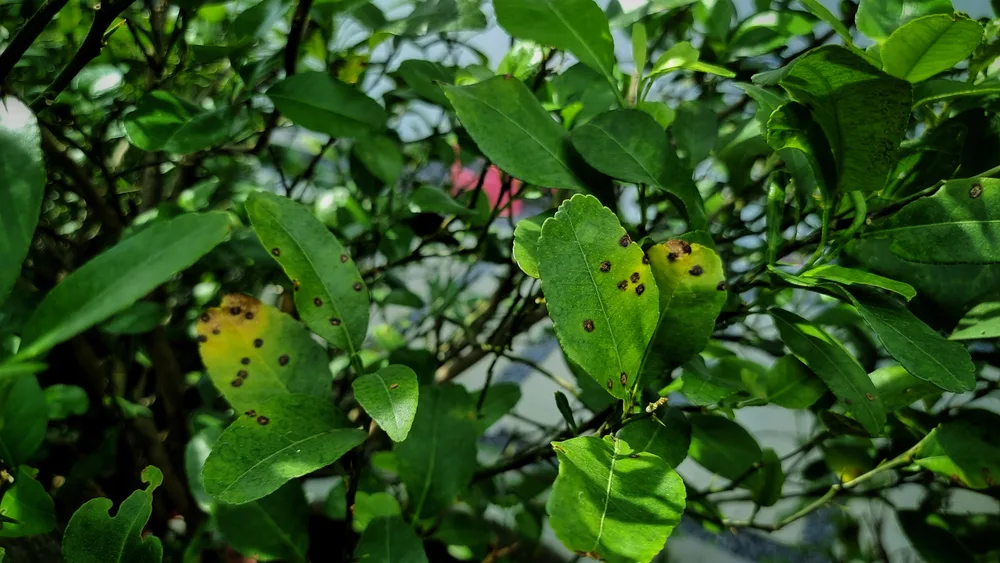
Another fungal disease to look out for is anthracnose. Like botrytis blight, it affects leaves, shoots, twigs, and stains lemons.
Anthracnose is easy to spot. Like most fungal diseases, it first appears as odd-colored lesions on affected areas, like leaves and branches. These spots are tanned with a noticeable dark outline, looking like a healing bruise. Eventually, the middles of these lesions turn dark, and often small black specks appear when the fungus spreads.
Anthracnose on lemon fruits looks slightly different. The spots are often sunken and sickly brown. When it spreads across the fruit, the center of these spores turns pink and the fruit begins to rot. Small twigs and baby shoots are also affected, causing dieback and defoliation.
Anthracnose thrives in cold, wet, and humid conditions. It spreads quickly and easily, especially during the wettest times of the year. Water splashing off infected plant debris helps this disease spread to your lemon tree.
As devastating as anthracnose may be, you can easily control it. Simply remove all plant debris from the base of your lemon tree. From there, you’ll need to prune and destroy all infected wood, twigs, and leaves.
The correct watering methods and lemon tree care help prevent anthracnose from occurring. You may want to use some copper-based fungicides and neem oil to prevent the fungus from taking root. But, these do affect beneficial insects, in some cases harming them and stopping them from taking up residence in your garden, so use them as a last resort.
5. Brown Scabs – Lemon Scab
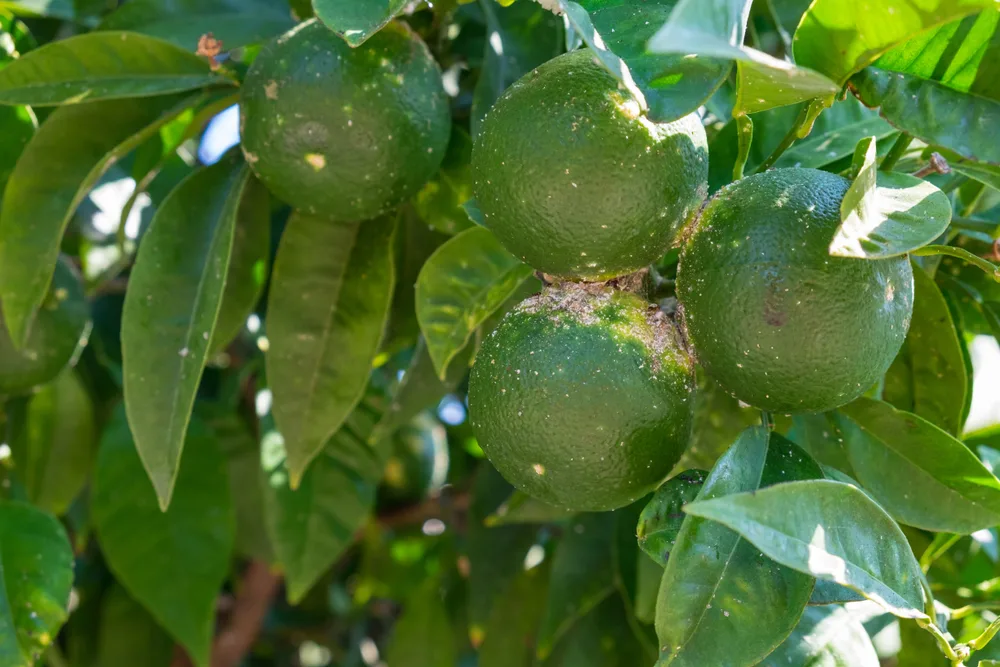
It seems that fungal diseases love lemons as much as we do. Another to keep a close eye out for is lemon scab or citrus scab.
This fungal infection doesn’t harm the fruit and you can still eat them – they just don’t look great. But, if left completely unattended, your tree’s health deteriorates, reducing its ability to fruit.
As its name suggests, lemon scab spots look like ugly brown scabs. At first, they look like small pustules, and as the disease spreads, it takes on its scab-like appearance.
Lemon scab affects twigs and leaves too.
Twigs and leaves become misshapen and withered. You’ll find that your lemon tree will seem stunted and bushy if it’s infected with lemon scab.
As with other fungal infections, wet and humid conditions are perfect for this disease to thrive and take hold.
Your first line of defense, as always, is to maintain good garden hygiene and correct watering methods. Many suggest culling the infected tree as an alternative to harmful fungicides that may damage other plants in your garden.
6. Yellowing Leaves – Chlorosis
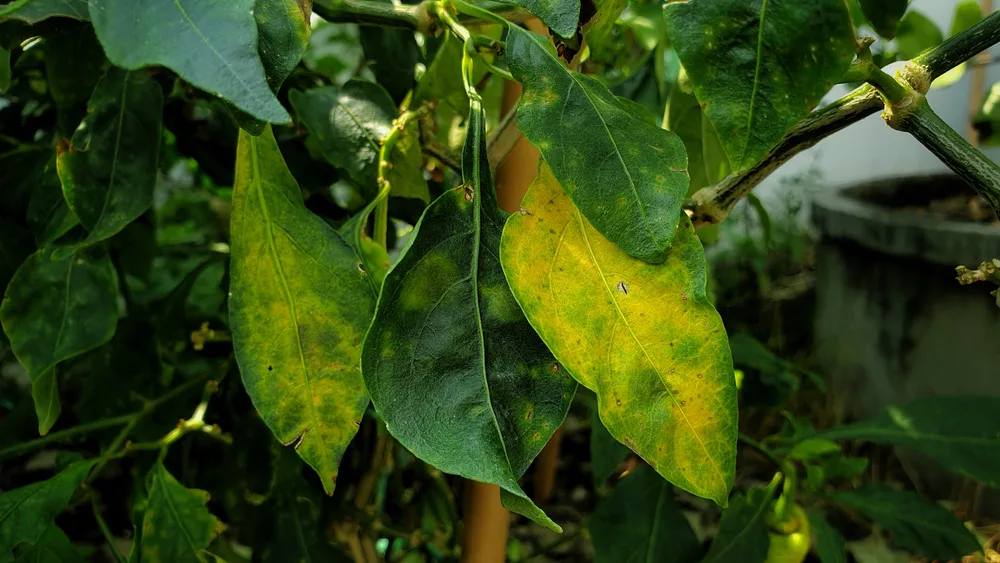
If you notice yellowing on your lemon tree leaves, you’ve may have a case of chlorosis on your hands.
Many factors can lead to the yellowing of leaves. Sometimes it could be poor drainage or soil that is too alkaline. Compacted soil and damaged roots could also lead to chlorosis.
Sometimes though, you’ll notice yellow veins streaking through your lush green leaves. Simply named yellow vein chlorosis, this form of chlorosis could mean your tree has a nitrogen deficiency. Increase the levels of nitrogen on your next fertilizing day and your tree will take care of itself.
But, yellow vein chlorosis can also be a result of trauma experienced by your lemon tree. Physical damage from garden tools, pests, and diseases could cause this phenomenon.
Always be careful with your gardening equipment, maintain high levels of garden hygiene and care for your lemon tree correctly. Ensure you’re managing pests and diseases too. Chlorosis, especially if caused by trauma, could lead to fruit drop and defoliation.
7. Silver Streaks On Leaves – Citrus Leaf Miner
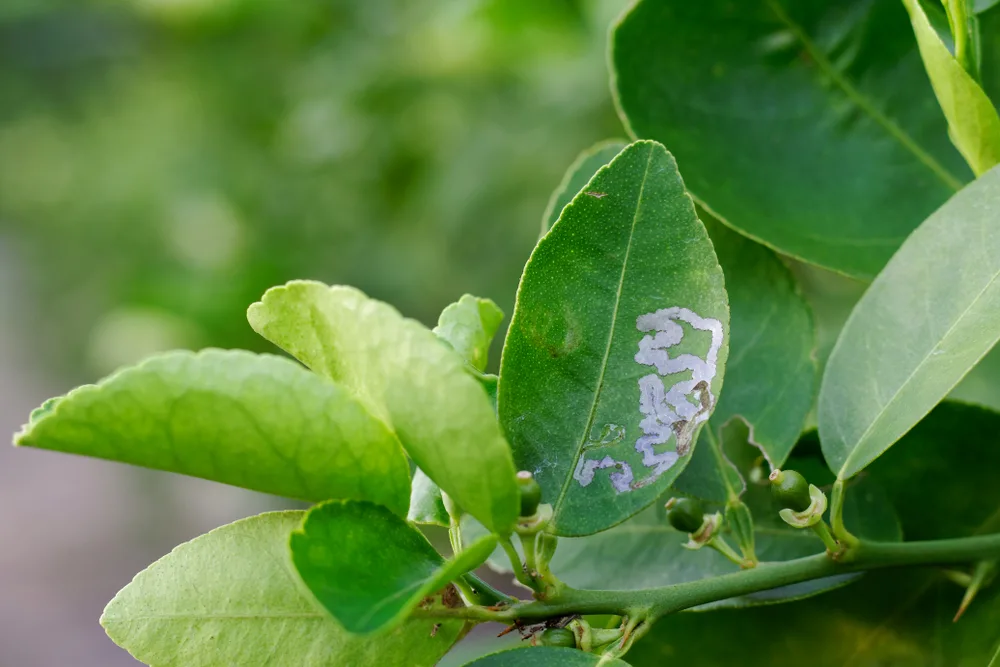
Aphids are always a major concern in citrus gardens, but when it comes to lemon trees, they’re not the only pests to look out for.
Citrus leaf miners are small moths native to Asia. Adult moths aren’t the concern – their larvae are. These small pests get their unique name because they tunnel across citrus leaves, leaving silvery trails streaking across your lemon tree leaves. Eventually, these leaves become distorted, and the growth of younger leaves can be affected.
Adult citrus leaf miners are minute and often go unnoticed. These silver moths have a black spot on the tips of their scaled wings. Larvae are equally as small but have a glass-like greenish hue.
Female moths tend to lay their eggs on the underside of leaves. Pupation occurs in under a month and inside the leaf margin. In as little as a week, you’ll notice their trails all over your leaves.
It’s important to note that these little pests don’t attack the fruit itself, just the leaves. Young lemon trees are especially vulnerable though, with the citrus minor infesting young foliage. If left unattended, the growth of your lemon tree will be affected.
The best way to deal with citrus leaf minors is to introduce beneficial insects. Not all bugs are bad. Some munch away at the pesky insects destroying your plants. Parasitic wasps and spiders are great insects to introduce into your garden. They can eliminate the majority of larvae and pupae in a matter of days.
Lemon trees are great additions to any garden capable of accommodating them. While they may seem to come with a plethora of problems, don’t let that stop you from growing one. They’re easy to care and they grow and fruit quickly. And, whether it’s a fungal disease, deficiency, or pest, there is usually a solution to the problem.
If you’re interested in adding more fruit trees to your property, check out some of these great dwarf options. Or maybe you don’t have room outdoors, you can still grow fruit trees indoors.

Get the famous Rural Sprout newsletter delivered to your inbox.
Including Sunday ramblings from our editor, Tracey, as well as “What’s Up Wednesday” our roundup of what’s in season and new article updates and alerts.

